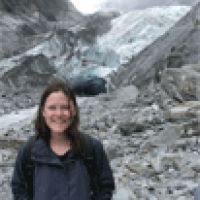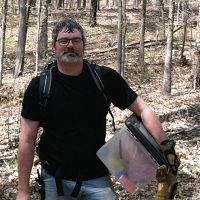Anderson, et al., 2015
Seeking GUTH, the Grand Unified Theory of Hillslopes: Linking weathering, erosion and landscapes
Anderson, SP, Dietrich, WE, Rempe, D, West, N, Brantley, SL, Bacon, AR, Buss, HL, Fisher, BA, Flinchum, B, Holbrook, S, Klos, PZ, Leopold, M, Moon, S, Nielson, T, Pelletier, J, and Terry, N. (2015)
EP34A-01 Landscape Evolution from a Critical Zone Science Perspective III, presented at 2015 Fall Meeting, AGU, San Francisco, CA, 14-18 Dec. Cross-CZO
-
Boulder, INVESTIGATOR
-
Eel, INVESTIGATOR
-
Eel, INVESTIGATOR, COLLABORATOR
-
Luquillo, INVESTIGATOR
-
Shale Hills, INVESTIGATOR, COLLABORATOR
-
National, Eel, Luquillo, Shale Hills, INVESTIGATOR, COLLABORATOR
-
Sierra, COLLABORATOR, GRAD STUDENT
-
Boulder, Calhoun, Eel, Reynolds, Sierra, COLLABORATOR
-
Boulder, INVESTIGATOR
-
Catalina-Jemez, INVESTIGATOR
Abstract
Critical zone (CZ) architecture—the spatial distribution of soil and weathered bedrock within a landscape—reflects the integrated effects of weathering and erosion. A goal is to predict subsurface CZ architecture from surface observations: such a Grand Unified Theory of Hillslopes (GUTH) would incorporate processes that transport water, solutes and sediment on hillslopes under topographic, tectonic, and climatic drivers. CZ architecture itself exerts strong control on fluxes. Therefore, feedbacks between CZ structure and internal processes play a role in CZ evolution. Development of GUTH is limited by a paucity of data that reveal the full CZ architecture and its spatial distribution, although efforts by the CZ Observatory community and others have advanced our understanding.
Subsurface properties can be documented by direct sampling of soil, weathered rock, and fresh rock. Samples allow analysis of chemical and physical properties but generally lack spatial coverage. Geophysical techniques, such as seismic refraction, yield spatially distributed data, but are rarely correlated to sample-based data. Combining distributed and sample data, especially for deep CZ samples, presents an opportunity to advance understanding.
Thermal, biological, and hydrological surface drivers tend to decline in intensity with depth. A significant challenge is therefore identifying and modeling processes that extend weathering downward under declining gradients. Significant gaps exist in models of water flux and chemistry in variably fractured media, of biotic processes (physical and chemical), and of fracture generation. Topographic stress and groundwater dynamics have been advanced as important drivers of CZ evolution. In both cases, the full hillslope must be considered, including dynamics of the lower boundary condition, to model development of a weathered profile. We therefore highlight the need for data and models that consider the hillslope from divide to channel, from surface to fresh rock.
Citation
Anderson, SP, Dietrich, WE, Rempe, D, West, N, Brantley, SL, Bacon, AR, Buss, HL, Fisher, BA, Flinchum, B, Holbrook, S, Klos, PZ, Leopold, M, Moon, S, Nielson, T, Pelletier, J, and Terry, N. (2015): Seeking GUTH, the Grand Unified Theory of Hillslopes: Linking weathering, erosion and landscapes. EP34A-01 Landscape Evolution from a Critical Zone Science Perspective III, presented at 2015 Fall Meeting, AGU, San Francisco, CA, 14-18 Dec..
Explore Further










